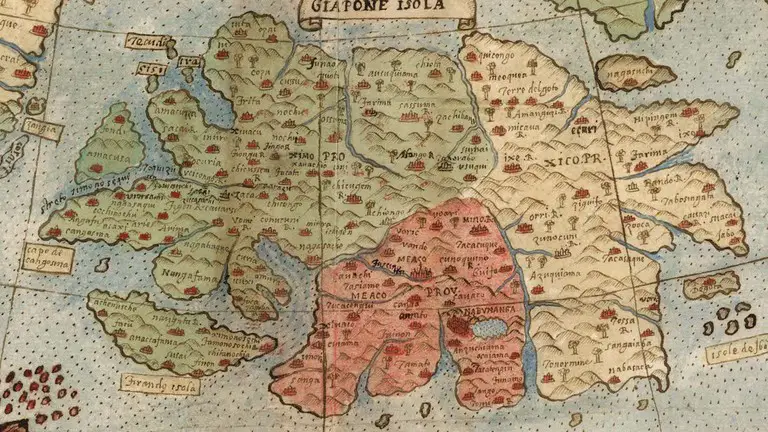 eople tend to imagine their past as grandiose, more spectacular than the present, and to believe that the ancients had knowledge that we cannot attain. This tendency was also nourished by the archeological discoveries of some important cities whose existence was not even known. Today it seems absurd to us that something as big as a city can be lost. But cities have always declined, been abandoned for various reasons, and have remained unknown to history for centuries or even thousands of years.
eople tend to imagine their past as grandiose, more spectacular than the present, and to believe that the ancients had knowledge that we cannot attain. This tendency was also nourished by the archeological discoveries of some important cities whose existence was not even known. Today it seems absurd to us that something as big as a city can be lost. But cities have always declined, been abandoned for various reasons, and have remained unknown to history for centuries or even thousands of years.
In this article, I want to present to you a list of ancient cities that have been lost, destroyed, or swallowed by the sea. To me, such events to truly define how further back in time humanity started their existence. It is also been said that there may have been civilizations with much more knowledge and higher capabilities than us, but the world decided to end them.
1. Akrotiri, Santorini
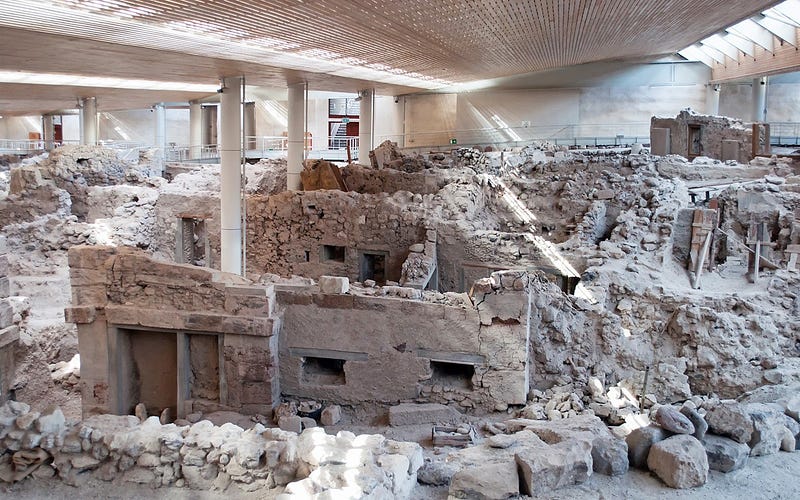
The Minoan civilization in Crete owes its name to the legendary King Minos, who built the famous labyrinth. The Minoan written sources are very few, so we do not know what name they had adopted for themselves. The whole civilization practically disappeared from the knowledge of the people until the beginning of the 20th century. With the rediscovery of the great palace of Knossos, the glory of the Minoan civilization was reborn.
Akrotiri is located on the island of Santorini, an outpost of the Cretans. Today it is believed that the eruption of the volcano Thera, located on the same island, from 1600 BC. would have led to the collapse of the Minoan empire. The discovery of the Akrotiri fortress in 1967 revealed very well-presented frescoes, three-story houses, and a very well-organized settlement. The water supply system suggests that the inhabitants of the fortress had access to both cold and hot water, the hot water is provided by the volcano that brought their end.
2. Timgad, Algeria
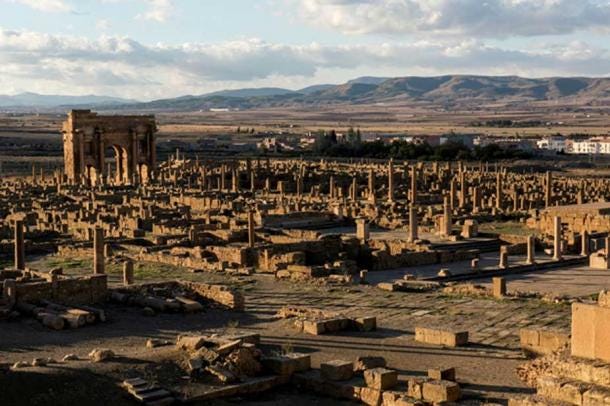
Timgad, or — for Latinists — Colonia Marciana Ulpia Traiana Thamugadi, is the lost city of adventure novels. Once an effervescent city, founded in the desert at the behest of Emperor Trajan, Timgad survived the collapse of the Roman Empire and became an important trading post. After being plundered in the 5th century, it was reborn as a Christian center.
A second great robbery took place in the 7th century, the work of the vandals which led to the definitive abandonment of the city. Over time, the sand of the Sahara Desert covered the city and helped preserve it. It was rediscovered in 1881. Today, the ruins of Timgad offer an amazing view of Roman cities in the African provinces. The Arch of Trajan, the typical Roman baths and the Temple of Jupiter can still be seen today. The temple is as large as the Pantheon in Rome, a proof of the importance that the Romans gave to the city of Timgad.
3. Pavlopetri, Greece

Undoubtedly, Atlantis will be mentioned in any discussion about “lost cities”. But we have no concrete evidence to support the idea that Atlantis really existed outside of Plato’s allegory. But there are other cities that have had the fate of Atlantis, as presented by the Greek philosopher, namely cities swallowed by water.
Pavlopetri was a city in pre-classical Greece, founded since the Stone Age. The fact that the city came underwater provided archaeologists with unique information about life in those distant times. Other sites were partially destroyed by later construction, but Pavlopetri remained intact. The city probably came underwater due to rising water levels and landslides caused by earthquakes.
4. Pompeii and Herculaneum, Italy
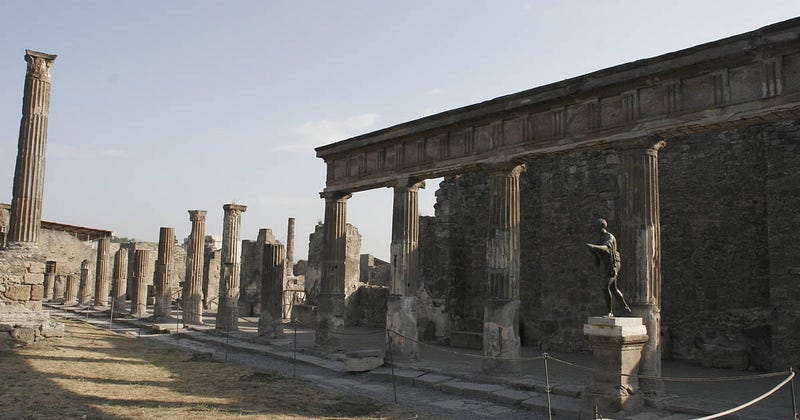
The famous Old Pliny had left with the Roman fleet to save those trapped at the foot of the volcano. The expedition had cost him his life. The ashes that took so many lives in the year 79AD have instead preserved the two cities for 1700 years. Many think of Roman cities as a perfect world of white marble, but Pompeii brings to light a city with many features that we would recognize even today. There are even political slogans on the walls: “Vote for Lucius Popidius Sabinus.” The city became a real gold mine for archaeologists in the 20th century and is an important tourist attraction.
5. Petra, Jordanian
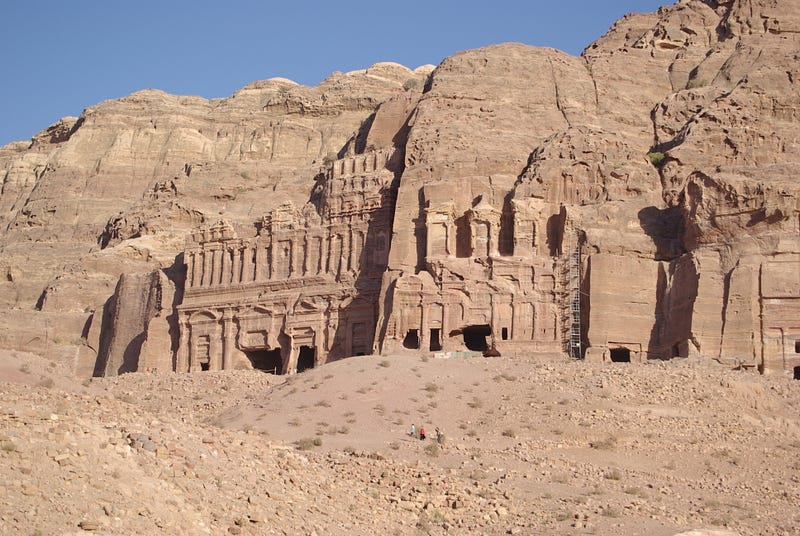
The inclusion of the city of Petra in this list can be considered controversial since we cannot say that it was really lost. It was abandoned, that’s for sure, but the locals may well have known of its existence. In any case, the city of Petra had been unknown to the West for at least 1,000 years. Pliny the Elder mentions Petra as being taken over by the Romans in 103BC.
The desert city flourished until an earthquake destroyed the vital water supply system. With other cities nearby, it was easier for the population to move than to start rebuilding the destroyed ones. Since then, the site has been left to the desert, attracting only adventurous travelers or grave robbers. Today, the city of Petra is one of the most important archeological sites in the Middle East. Half built and half dug in stone, Petra is certainly one of the architectural wonders of antiquity.
6. Tikal Guatemala
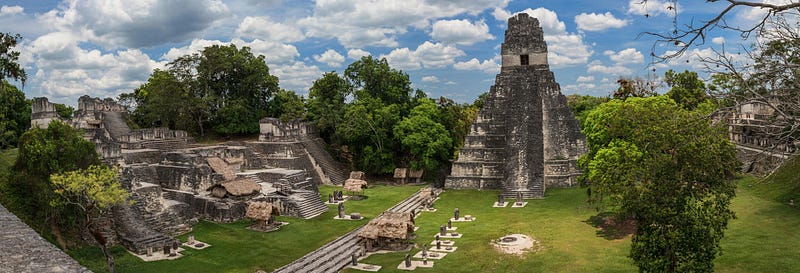
The Mayan city of Tikal was once the capital of a Mayan kingdom and one of the largest cities in the New World. The site was inhabited between 200–900AD. Thanks to the exceptional state of preservation of the city, today we know many things about the grandeur of Tikal in its heyday. Like other ruins in the New World, this site is thought to have been abruptly mysteriously abandoned, but research has shown that the land could not have housed the large number of people known to live there.
It seems that the city was gradually abandoned, over several years, being left prey to the jungle. However, some locals would have known of its existence: over the centuries there have been many rumors about a lost city. The first organized expedition found the city in 1848. Explorers came across the largest archaeological site in the New World, with 70-meter-high pyramids, royal palaces, and entertainment arenas.
7. Cliff Palace, Colorado
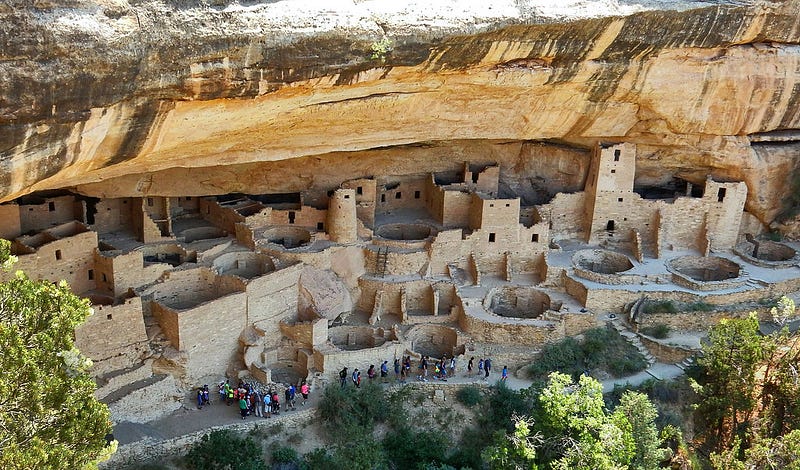
The Pueblo people, Native Americans of the southwestern United States, take their name from the villages they built. Pueblo communities still exist today, but one of the most fruitful eras in the history of this community is that of the old Anasazi society from the years 900–1200AD. The rock palace was built in this golden age of the Anasazi tribe. According to dendrochronological analyzes, most of the buildings in this site were built around 1200AD.
The site was inhabited only for a short time and was abandoned until 1300 AD, remaining hidden until it was rediscovered in 1888. Find out more searching for lost cattle, Richar Wetherwill, Charles Mason and a Native American from the Ute tribe found the old buildings protected by a rock wall. The reasons why the site was abandoned are not known, but the theory accepted by most specialists is that the first of the great droughts that affected the American continent in the centuries before the arrival of Europeans destroyed agriculture throughout the region, and the inhabitants had to move.
8. Machu Picchu, Peru
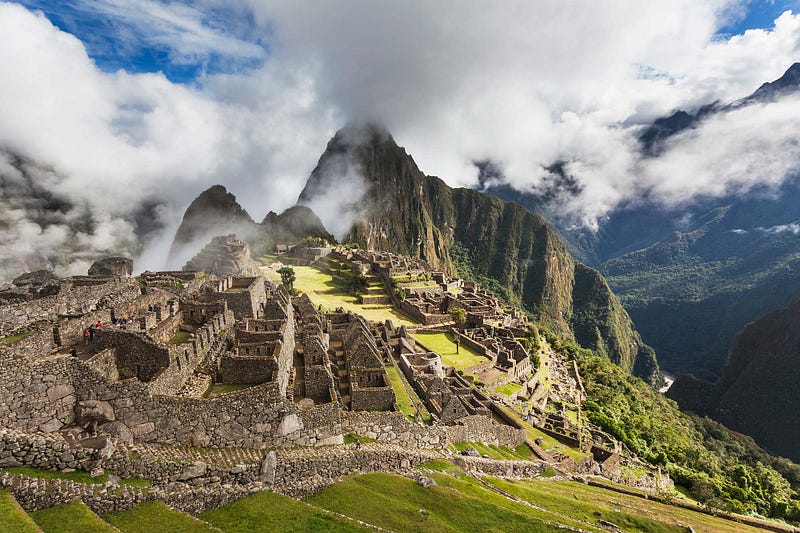
No list of lost cities would be complete without Machu Picchu. This ancient Inca city, located at the top of the Andes, was inhabited for a relatively short period of time, probably between 1450–1572AD, before being abandoned as a result of Spanish conquests. As the Spaniards never discovered the city and the natives did not reveal the secret of the Incas, Machu Picchu was known to the West only in the twentieth century.
American archaeologist Hiram Bingham is the first foreigner to arrive here, only in 1911. There is still debate about the city’s functionality whether it was a stable settlement, a royal city, or a religious shrine. Today it is very easy to get to Machu Picchu, there is a regular bus line that takes tourists to the top of the mountain.
9. Troy, Turkey

For a long time, it was thought that Troy was a legendary city, like Atlantis. Then, in 1871, a self-taught classicist, Heinrich Schliemann, financed the excavations on the site of a mound in Hisarlık, Turkey. In ancient times there was a city called Ilium where archaeologists have found huge defensive walls, similar to those described by Homer. In addition to the walls of Troy, Schliemann also found gold jewelry that he presented to be Elena’s jewelry. The treasure, known as Priam’s Treasure, was considered lost after it disappeared from Berlin in 1945 but was found to have fallen into Soviet hands.
They “confiscated” the treasure as compensation for the damage caused to the USSR by Germany during World War II. Research has shown that the city was founded around 3000 BC. and that it was destroyed several times. After each destruction, it was built directly on the ruins. There is a debate as to which of these strata belongs to the city besieged by the Greeks. In any case, the imposing walls of the city, say, archaeologists would have far surpassed any siege weapon available to the Greeks. It seems, therefore, that reality confirms Homer’s story and the need to use a trick like the Trojan horse.
10. Mohenjo-Daro, Pakistan
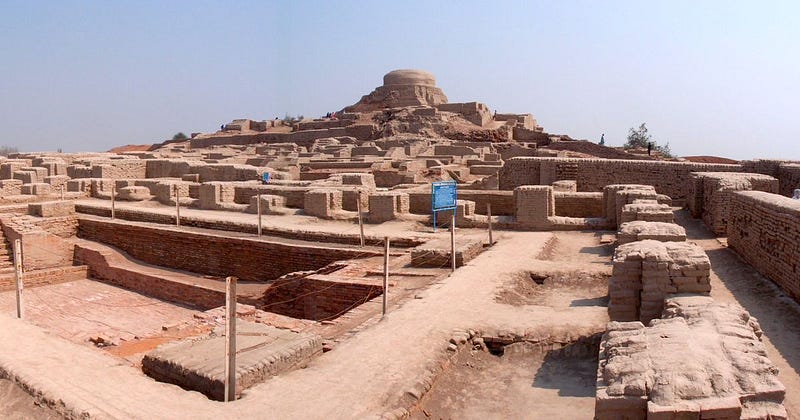
Last but not least we have the lesser-known Mohenjo-Daro. Along with Egyptian and Mesopotamian civilization, the Indus Valley is considered to be one of the greatest civilizations in the world. Science, writing, trade, crafts, religion, and agriculture have seen remarkable progress in this civilization, which reached its peak sometime around 2000 BC. Its advanced nature can be seen in the ancient city of Mojenjo-Daro, with its tidy streets and complex drainage system. Unlike the cities mentioned above, there is no palace or temple to stand out here.
Therefore, some researchers believe that the Indus Valley civilization would have been an egalitarian one. As we know too little about this ancient society, such a statement is quite bold. The floods caused by the Ind River seem to be the basis for the destruction of the city at least six times. Each time, new cities were built directly over the ruins of the old ones. The cause of the definitive abandonment of the city is not known — about 1800 BC. Mohenjo-Daro was rediscovered only in 1922.
Avid Writer with invaluable knowledge of Humanity!
Upcoming historian with over 30 million views online.
“You make your own life.”

